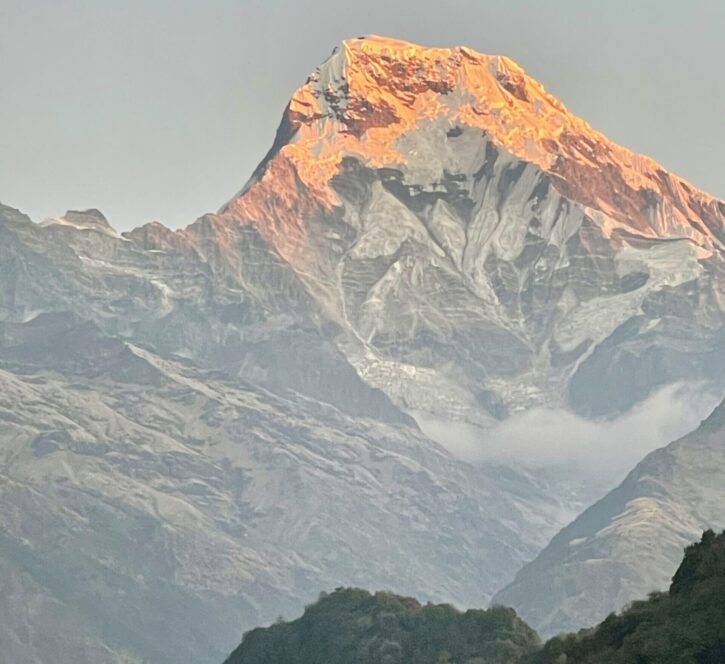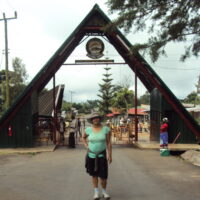The Annapurna Base Camp trek (ABC) is easily one of the most popular treks in the world. It includes (depending on the route you choose) a stunning hike to Poon Hill and into the Annapurna Sanctuary.
It has several things going for it –
- It brings you face to face with the world’s 10th highest peak.
- It offers moderate to difficult multi-day trek.
- The scenery is spectacular
- Get insights on local culture
- It’s a non-technical climb requiring no equipment.
- You stay at comfortable teahouses
However, it requires adequate preparation before you embark on the trek of your lifetime.
That being said, it requires adequate preparation before you embark on the trek of your lifetime. There are two popular seasons for undertaking this trek –
- September to November
- March t0 May April
In this post I will touch upon various topic and FAQs that will help you plan your trek and have the best time.
Training is key (Physical preparation)
Well, that goes without saying. Training is key. In fact, a good training regime is recommended at least 2-3 months or more before attempting the ABC trek. Although you will spend minimal time at high altitude, it is not an easy trek and requires adequate preparation.
Be aware: There are thousands of stairs up and down (daily) as you make your way to the top. A good idea would be to including stair climbing into your training schedule.
The ABC trek takes you though some high mountain passes and back down before going up again. Which means, you will have to train not just to climb up, but for downhill climb too.
- Get mountain fit: Train your body to withstand pressures of constant strain at altitude. This is the most important part of training for the trek. Besides being physically fit, you need endurance and strength to complete the trek.
- Train 4-5 days a week: I recommend spending least four-five days a week doing some sort of intense physical exercise for approximately six months prior to your trek. Add walking up hill, stair-master or climbing stairs with a 6-8 kg backpack. Go on hikes (3-6 hours) at least once a week.
- Train for the downhill: If you go up, you must come down! So, while its all good that you train to go uphill, it is equally or more important to train to go downhill. Often going downhill gets tricky, so train in advance for this.
Mental Preparation
If you are signing up for the ABC trek, congratulation, you are already a lover of outdoors and mountain living. It is therefore important to prepare yourself mentally to deal with the challenges of mountain living.
The trek may include using the toilet outdoors, wet-wipe baths, dirt on the trail, sometime bugs, lack of hot water at altitudes, lack of connectivity… so while you may love the outdoors, prepare yourself to face these challenges. Be ready for the wilderness experience – and what this really means is accommodation in tea houses run by local people, sleeping on narrow beds (often twin sharing), eating local food (trust me, the local food is wholesome and delicious). Showers are available up to certain altitudes, but you could use wet wipes to keep yourself clean.
The toilet situations can be challenging at times – while some teahouses have western-style toilets, some go the hole-in-the-ground way. Also be prepared to use the “outdoor toilet” on the trail.

Get the Right Gear
Picking the right gear for your ABC trek is very important. You will be walking for 6-8 every day so its most important to get the right footwear.
Your feet are most important – never skimp on footwear when you are going to be walking multiple hours a day, for ten days. Investing in a good, sturdy waterproof (mid- high ankle) trekking boot is essential. Ensure that you have “broken” into the boots before you begin your trek.
Secondly, get yourself a good down jacket, fleece and thermals, trekking poles, a woolen cap.
(A detailed post of your packing list will come later.)
Remember, no one size fits all
Packing for your Annapurna Base Camp Trek in Nepal requires some serious consideration – it is also very personal. Some trekkers may feel less cold than the other, want a certain brand of jackets and other clothing or prefer certain pieces of gear. Whatever be your choice of clothing, remember to check and double check what you need before you start your trek
Staying hydrated
Staying hydrated in of absolute essence in the mountains. A camelback is idea (that way, you can sip your way uphill instead of having to stop to drink water). Staying hydrated must be your top priority – remember that at higher altitudes, your body will dehydrate quickly.
Aim at drinking at least 5 liters of water a day. Water refills can be done at tea houses along the way.
Prepare for medical emergencies
Different people react differently to altitudes. While some may not have it bad, few other experience headaches and breathlessness as they go higher. It is important to learn how to manage these headaches and other altitude related sickness.
First, do not be afraid of a little headache. Headaches are completely normal at high altitudes. The best way to overcome this is to drink plenty of water. One of the biggest causes of headaches in the mountains is dehydration, which means the more hydrated you are, the less chances of getting a headache. Alternatively, you can opt to take a headache tablet.
*If your headache persists and is accompanied by other signs of AMS, it is advisable to descend to lower altitude rapidly.
Protect yourself from the sun
Long days on the trail can expose you to harmful sun rays, especially at higher altitudes. Additionally, you can easily get dehydrated the longer you stay exposed in the sun. While being in the sun cannot be avoided, take adequate care to protect yourself as much as possible.
Make sure you wear factor 30/50 sunblock, a sun hat and long pants and sleeves will help you protect yourself from the sun.
Slow and Steady – Acclimatization is key
The most important thing is to understand that ABC trek is not a race. This means, you must take it slow and steady – one step at a time. Considering the altitude gain, it is essential to acclimatize to low oxygen levels, which take time.
When signing up for the trek, make sure you opt for a company that includes more time acclimatizing (and not less). This is very crucial for your success. Do not go with a company rushing you up the trail and back.
Remember to enjoy yourself
The most important thing is to remember that you are on a holiday of your choosing! And trekking ABC is not a race you are aiming to win. Take it slow and easy. Enjoy the journey. At the end of the day, you will have time to relax in the camp/teahouse. Unwind. Laugh with your teammates – go over your day. It is important to stay cheerful and happy and enjoy your new environment. Keep an open mind. You will encounter cultural differences along the way, but learning to accept it will make all the difference.
FAQs
How difficult is the ABC trek
Let’s just say that is not exactly a walk in the park. The multi-day trek takes you through diverse landscapes, terraced farmlands to dense forests which means you will challenge yourself every day, both mentally and physically.
What to look for in a tour operator
- Registered and licensed operator
- Someone who offers more time for acclimatization
- Prepared to evacuation
- Equipped to handle medical emergencies
- Trained professional guides
- Flexible itinerary
What permits are necessary for ABC Trek?
To undertake the Annapurna Base Camp (ABC) trek, securing the necessary permits is essential for both legal compliance and the preservation of the region’s natural beauty. As of March 2025, the primary permit required is the Annapurna Conservation Area Permit (ACAP).
Trekkers can acquire the ACAP at the Nepal Tourism Board offices located in Kathmandu or Pokhara. Nearly always, your tour operator will do this for you. To obtain this permit, you will need to provide a copy of your passport, two passport-sized photographs, and details of your trekking itinerary.
Cost:
- Foreign Nationals: NPR 3,000 per person (approximately USD 30).
- SAARC Nationals: NPR 1,000 per person (approximately USD 10).
Travel insurance for ABC Trek: What should it cover?
For travel insurance covering an Annapurna Base Camp trek guide, ensure it includes comprehensive medical coverage, emergency evacuation (including helicopter rescue), coverage for high-altitude trekking (above 5000 meters), and trip cancellation/interruption, plus other standard travel insurance benefits.
Medical Coverage:
- Altitude Sickness: The trek reaches elevations where altitude sickness can occur. Ensure your insurance covers treatment for this condition.
- Medical Expenses: Your policy should cover costs for doctor visits, hospital stays, and necessary medications during the trek.
Emergency Evacuation:
- Helicopter Rescue
- Repatriation



